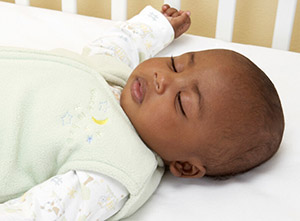In the United States, infant mortality among non-Hispanic Blacks is twice the rate among non-Hispanic Whites. This disparity may be linked to income inequality. People living in poverty are less likely than their high-income counterparts to have access to adequate health resources and nutrition and are more likely to have infants with low birthweight. A recent NIMHD-supported study showed that states with higher minimum wages had lower infant mortality rates among non-Hispanic Blacks, suggesting that increasing the minimum wage could have a protective effect that helps reduce the disparity.
 The researchers used federally collected data on 3.87 million infants born in the United States in 2010. For each infant, the data included information on the mother’s race/ethnicity, age, place of residence, and other characteristics, which were analyzed with state-level minimum wages in 2010.
The researchers used federally collected data on 3.87 million infants born in the United States in 2010. For each infant, the data included information on the mother’s race/ethnicity, age, place of residence, and other characteristics, which were analyzed with state-level minimum wages in 2010.
The average state-level minimum wage was $7.46, ranging from $6.15 to $8.55. Infants of non-Hispanic Black mothers living in states with a low minimum wage were significantly more likely to die during their first year of life than those born in states with a high minimum wage. For non-Hispanic White mothers, infant mortality rates appeared higher in states with a low minimum wage, but the difference was not significant.
This study supports the possibility that a higher minimum wage could improve infant mortality, particularly for the most affected U.S. racial/ethnic groups. Future studies could examine the impacts of other economic factors, such as individual or family income and state-level assistance programs, on infant mortality.
Page updated January 14, 2022

